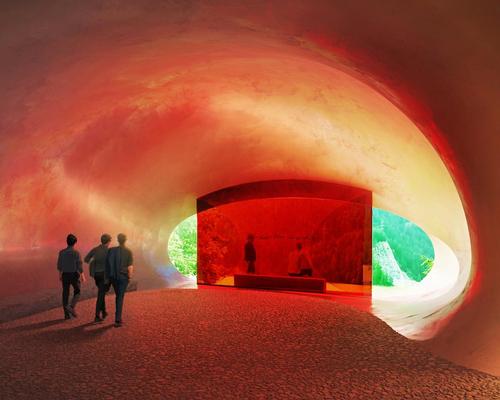28 Feb 2020
Herzog & de Meuron's Swiss roadside chapel will provide a peaceful place to pause
BY Stu Robarts

Herzog & de Meuron are creating a roadside chapel in Andeer, Switzerland, that will provide a quiet and peaceful place for people to stop, rest and marvel among the surrounding mountains, rivers, meadows and forests.
In designing 515 Autobahnkirche, the studio was conscious that are a number of others chapels in the area, many of which are centuries old and are, as they describe, "architectural and art historical gems", whether with simple plastered walls, frescoes, painted ceilings or wood carvings.
"We have always admired this architecture for its enduring ability to fascinate people, even more so perhaps because the churches are not embedded in an urban context but are a fully functional part of their natural surroundings," explained Herzog & de Meuron.
"It is actually our love of these chapels that made us realize we couldn’t use them as an analogous model for today’s contemporary architecture. It is impossible to conjure the aura of old walls without resorting to kitsch."
The challenge instead was to create a chapel with a new architecture and – one that did not draw on the signs or symbols of any religion.
"We were looking for architecture that would sharpen the perception of visitors – of the location, the natural environs, and even of the way they see themselves," the studio said.
They also felt that blocking out noise from the nearby motorway was a priority and so this began to shape the design.
After a great deal of conceptualising, the final design was conceived as a sequence of chapels sunken into the ground to insulate them from the outside noise.
Access will be provided from above, through a four-sided structure the walls of which will appear to lean against each other.
The spaces, accessed via a broad and spiralling flight of stairs, are each designed have a specific purpose.
An oval room with a red pane of glass will reference other nearby religious sites that archaeologists have discovered, another will be filled with daylight to provide a space for reading and the third contains a matte, reflecting wall to confront visitors with themselves.
Close Window